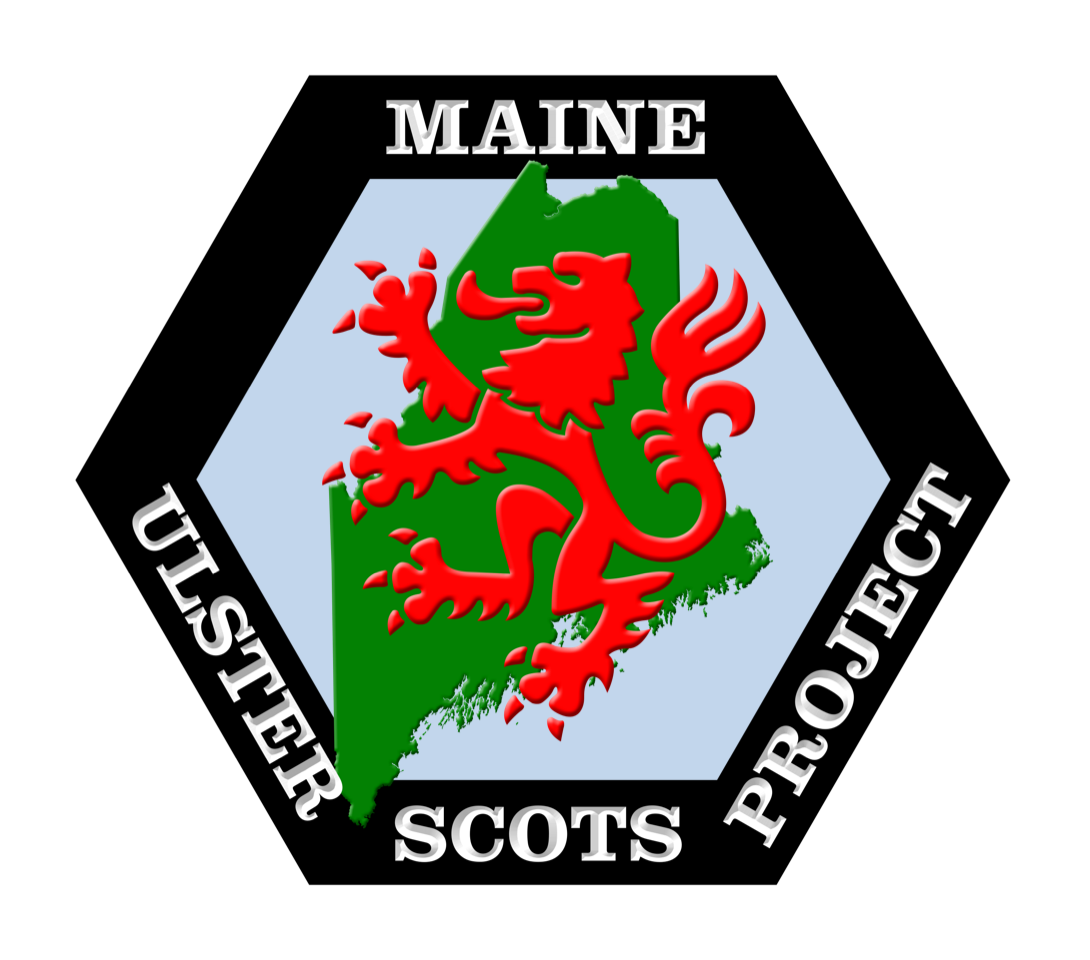The Ulster-Scots ‘Means’ homestead story gets a fresh look.
Page 6 – HISTORIC RECORDS AND PHYSICAL FINDINGS ~ John T. Mann, Director MUSP
There are many historic records that provide information on the lives of the Means family and their Ulster-Scot neighbors. Those records are being used to create a timeline of events that affected the families from lower Flying Point to Bunganuc. About a dozen interconnected families occupied the area during the period of the French and Indian War. Most, if not all, had ties to the original families that arrived in Falmouth harbor, after being “warned out” of Boston, on the brig “Robert” in the fall of 1718 and also to the families that arrived in Brunswick on the “McCallum” with Rev. Woodside that same year . While some passengers moved on to Nutfield, New Hampshire with Reverend MacGregor, many more families, including Thomas Means parents, Robert Means and Jean (or Jane) Armstrong Means stayed in Maine and quickly spread throughout the area. The list of Jean Armstrong Means’ children, and grandchildren reads like a who’s who of Maine families throughout the Casco Bay region. Jean lived to be near 100 and had eleven children. Other families residing at Flying Point included Anderson, Mann, Hewey, Rogers, Patten, Rae, Pickerman, Dunning, Jameson, Chase, and Campbell.
Perhaps one of the most important source documents for learning about the daily lives of the Means family and for confirming the site location is Thomas Means’ inventory of estate prepared soon after his death in 1756. Numerous artifacts directly related to items on that list have been found at the dig site on Flying Point including:
part of a broken tea set; part of an iron kettle; part of an iron frying-pan; an ox shoe, broken case bottle glass; an iron splitting wedge, pig bones, etc. …
And an item in the inventory that has given pause for much thought and speculation as to it meaning is:
“1 small House or the walls of a House……… valued at £10”
Thomas Means’ inventory of estate
This item has been confusing. Was it, in fact, a house or was it merely the walls of a house? How could seven people, Thomas Means, his wife Alice, daughters Jane and Alice, infant son Robert, sister-in-law Molly, and hired man John Martin be sheltering in only the walls of a house? And, if it was indeed a complete small house, then why the mention the walls of a house?
Information being uncovered at the dig site may ultimately give us the answer. Thus far Pamela Crane and her dig team have discovered a debris field of residential artifacts dating from the mid-18th century which are scattered by decades of agricultural activity over a small area in general conformance to the oral tradition of the family and in line with historic land title records for the area. But, they are also uncovering what appears to be a home that was under construction and never lived in. The area contains virtually no residential artifacts. It is located just down slope about 30 meters from the debris field at the top of the hill. Could it be that the Means family did have a small house and the walls of a house on the fateful early morning of May 10, 1756? If so, this will give the team a unique opportunity to study a transition period home, still under construction, which bridges the gap between early log homes common to the area in the eighteenth century and the early 19th century Cape Cod style homes on stone foundations that are so common to Flying Point and are still in use today!
Artifacts from Means homestead.
MUSP expects the work at the Means site to continue for several more years and they will be sharing their findings from time to time along the way. A big thank you is given to all who have supported that work, including our associates in this particular adventure, the Wolfe’s Neck Center, the Thomas Means Club and the Freeport Historical Society.




